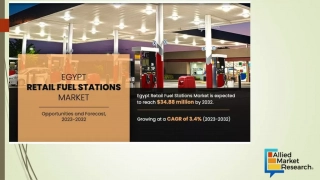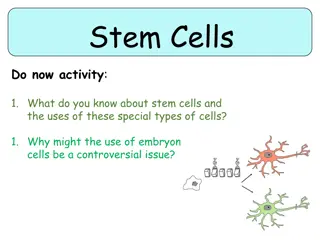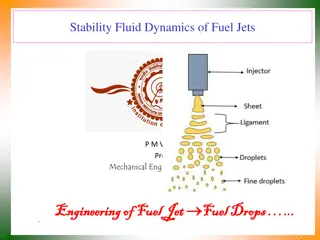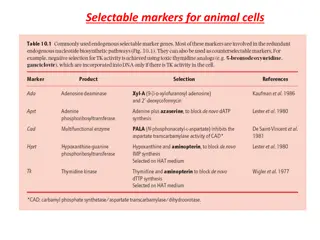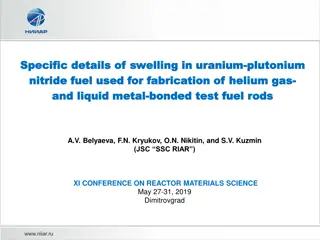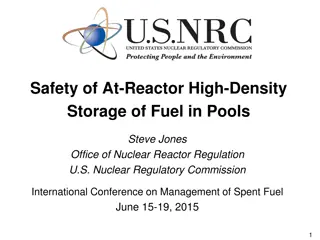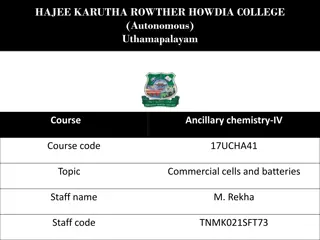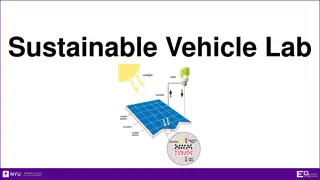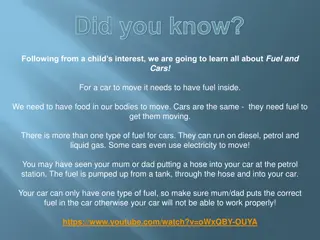Fuel Cells: Definition, Working, and Applications
Fuel cells are electrochemical cells that generate electricity through reactions between fuel and an oxidizing agent like oxygen. They offer high efficiency compared to traditional power plants. The working of fuel cells involves hydrogen and oxygen reacting to produce electricity. NASA has utilized fuel cells to power space capsules and satellites. These cells continue to play a crucial role in sustainable energy generation.
Uploaded on Nov 12, 2024 | 0 Views
Download Presentation

Please find below an Image/Link to download the presentation.
The content on the website is provided AS IS for your information and personal use only. It may not be sold, licensed, or shared on other websites without obtaining consent from the author.If you encounter any issues during the download, it is possible that the publisher has removed the file from their server.
You are allowed to download the files provided on this website for personal or commercial use, subject to the condition that they are used lawfully. All files are the property of their respective owners.
The content on the website is provided AS IS for your information and personal use only. It may not be sold, licensed, or shared on other websites without obtaining consent from the author.
E N D
Presentation Transcript
StudyMafia.Org Fuel Cell Submitted Studymafia.org Studymafia.org Submitted To: To: Submitted Submitted By: By: Studymafia.org Studymafia.org
Table Contents Definition Introduction About Fuel Cell Working of Fuel Cell Types of Fuel Cell Applications of Fuel Cell Conclusion 2
Definition A fuel cell can be defined as an electrochemical cell that generates electrical energy from fuel via an electrochemical reaction. 3
Introduction Fuel cells require a continuous input of fuel and an oxidizing agent (generally oxygen) in order to sustain the reactions that generate the electricity. Therefore, these cells can constantly generate electricity until the supply of fuel and oxygen is cut off. Despite being invented in the year 1838, fuel cells began commercial use only a century later when they were used by NASA to power space capsules and satellites. 4
About Fuel Cell The efficiency of the fuel cell described above in the generation of electricity generally approximates to 70% whereas thermal power plants have an efficiency of 40%. This substantial difference in efficiency is because the generation of electric current in a thermal power plant involves the conversion of water into steam, and the usage of this steam to rotate a turbine. 6
Working of Fuel Cell The reaction between hydrogen and oxygen can be used to generate electricity via a fuel cell. Such a cell was used in the Apollo space programme and it served two different purposes It was used as a fuel source as well as a source of drinking water (the water vapour produced from the cell, when condensed, was fit for human consumption). 7
Working of Fuel Cell The working of this fuel cell involved the passing of hydrogen and oxygen into a concentrated solution of sodium hydroxide via carbon electrodes. The cell reaction can be written as follows: Cathode Reaction: O2 + 2H2O + 4e 4OH Anode Reaction: 2H2 + 4OH 4H2O + 4e Net Cell Reaction: 2H2 + O2 2H2O 8
Working of Fuel Cell However, the reaction rate of this electrochemical reaction is quite low. This issue is overcome with the help of a catalyst such as platinum or palladium. In order to increase the effective surface area, the catalyst is finely divided before being incorporated into the electrodes. 9
Types of Fuel Cell The Polymer Electrolyte Membrane (PEM) Fuel Cell: These cells are also known as proton exchange membrane fuel cells (or PEMFCs). The temperature range that these cells operate in is between 50oC to 100oC The electrolyte used in PEMFCs is a polymer which has the ability to conduct protons. A typical PEM fuel cell consists of bipolar plates, a catalyst, electrodes, and the polymer membrane. 10
Types of Fuel Cell Phosphoric Acid Fuel Cell These fuel cells involve the use of phosphoric acid as an electrolyte in order to channel the H+ The working temperatures of these cells lie in the range of 150oC 200oC Electrons are forced to travel to the cathode via an external circuit because of the non- conductive nature of phosphoric acid. 11
Types of Fuel Cell Solid Acid Fuel Cell A solid acid material is used as the electrolyte in these fuel cells. The molecular structures of these solid acids are ordered at low temperatures. At higher temperatures, a phase transition can occur which leads to a huge increase in conductivity. 12
Types of Fuel Cell Alkaline Fuel Cell This was the fuel cell which was used as the primary source of electricity in the Apollo space program. In these cells, an aqueous alkaline solution is used to saturate a porous matrix, which is in turn used to separate the electrodes. The operating temperatures of these cells are quite low (approximately 90oC). 13
Types of Fuel Cell Solid Oxide Fuel Cell These cells involve the use of a solid oxide or a ceramic electrolyte (such as yttria-stabilized zirconia). These fuel cells are highly efficient and have a relatively low cost (theoretical efficiency can even approach 85%). The operating temperatures of these cells are very high (lower limit of 600oC, standard operating temperatures lie between 800 and 1000oC). 14
Types of Fuel Cell Molten Carbonate Fuel Cell The electrolyte used in these cells is lithium potassium carbonate salt. This salt becomes liquid at high temperatures, enabling the movement of carbonate ions. Similar to SOFCs, these fuel cells also have a relatively high operating temperature of 650oC. 15
Applications of Fuel Cell Fuel cell technology has a wide range of applications. Currently, heavy research is being conducted in order to manufacture a cost-efficient automobile which is powered by a fuel cell. A few applications of this technology are listed below: Fuel cell electric vehicles, or FCEVs, use clean fuels and are therefore more eco-friendly than internal combustion engine-based vehicles. 16
Applications of Fuel Cell They have been used to power many space expeditions including the Appolo space program. Generally, the byproducts produced from these cells are heat and water. The portability of some fuel cells is extremely useful in some military applications. These electrochemical cells can also be used to power several electronic devices. Fuel cells are also used as primary or backup sources of electricity in many remote areas. 17
Conclusion Fuel cells provide clean energy and emit no pollution. Moreover, it also offers high efficiency and zero emissions. No carbon dioxide is produced while generating chemical energy from a fuel cell. 19





